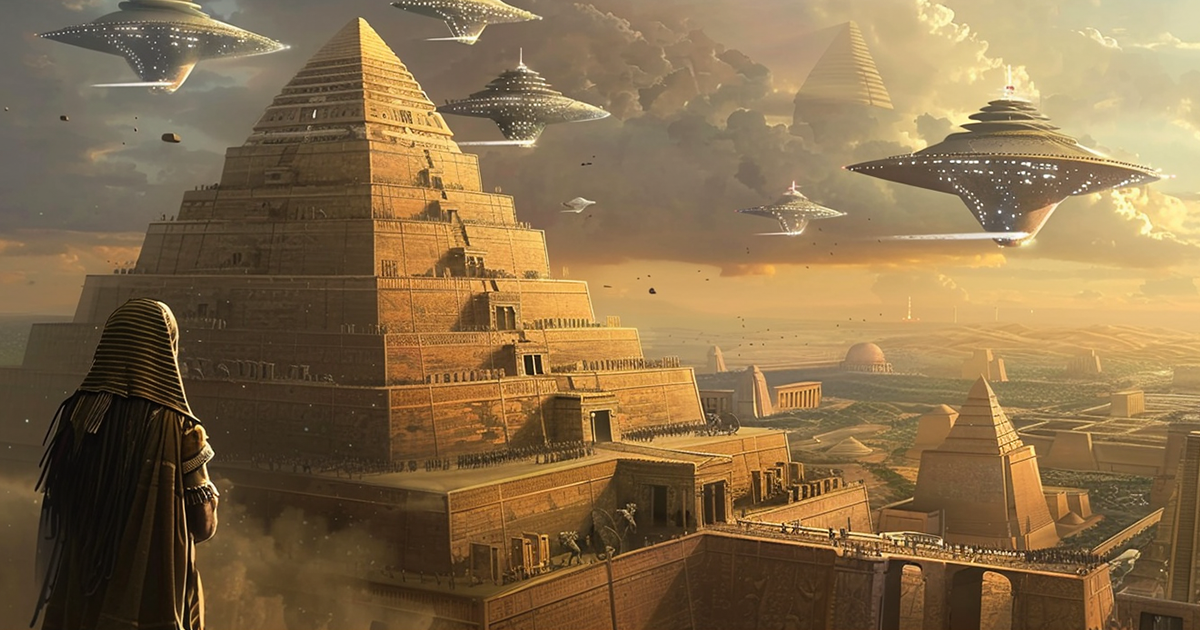Embarking on an exploration of the rich mythology of ancient Sumeria unveils a realm of distinctive beliefs and narratives that provide a unique window into one of humanity’s earliest civilizations. At the core of the mesmerizing Sumerian tales lie the stories of the Anunnaki, celestial beings who descended to Earth utilizing flying contraptions referred to as “shem.” These ancient chronicles bear intriguing similarities to contemporary accounts of unidentified flying objects (UFOs), igniting curiosity about the origins of these legends and their significance in deciphering the mysteries of ancient societies.
According to Sumerian lore, the Anunnaki were revered deities who wielded profound influence over both the earthly realm and its inhabitants. Their terrestrial visits often involved mentions of their celestial vehicles, the “shem,” which granted them the ability to effortlessly traverse between diverse cosmic realms and our planet. These flying machines were depicted as mighty and breathtaking, capable of traversing great distances with ease.
The parallels drawn between the Sumerian portrayals of the “shem” and modern-day UFO sightings are striking, depicting enigmatic airborne entities that defy conventional explanations. Furthermore, the advanced technology attributed to the “shem” resonates with the abilities frequently associated with contemporary reports of UFO phenomena.

The implications stemming from these resemblances run deep. While traditional interpretations often view the Anunnaki myths as symbolic or allegorical, the parallels with modern UFO encounters present intriguing possibilities. Could it be that the ancient Sumerians had genuine interactions with advanced civilizations or extraterrestrial beings? Or do these narratives symbolize celestial events or spiritual insights?
One theory speculates that the “shem” described in Sumerian myths could stem from real encounters with advanced technologies or civilizations. According to this hypothesis, the Anunnaki may have been interstellar travelers who arrived on Earth utilizing sophisticated spacecraft. Alternatively, some scholars suggest that the “shem” may represent abstract concepts, such as the transition between the earthly and divine realms.
As we delve deeper into the interpretation and examination of ancient Sumerian myths, it proves essential to approach them with an open mind and a readiness to consider diverse perspectives. While the true nature of the Anunnaki and their flying apparatus remains shrouded in mystery, their presence in Sumerian mythology offers invaluable insights into the beliefs and ideologies of one of humanity’s earliest cultures.
In conclusion, the tales of the Anunnaki and their “shem” encourage contemplation on the enduring fascination of ancient myths and the enigmatic enigmas they enfold. Whether perceived as historical accounts, symbolic representations, or alternative interpretations, these narratives encourage us to reflect on the cosmos and our position within it.
